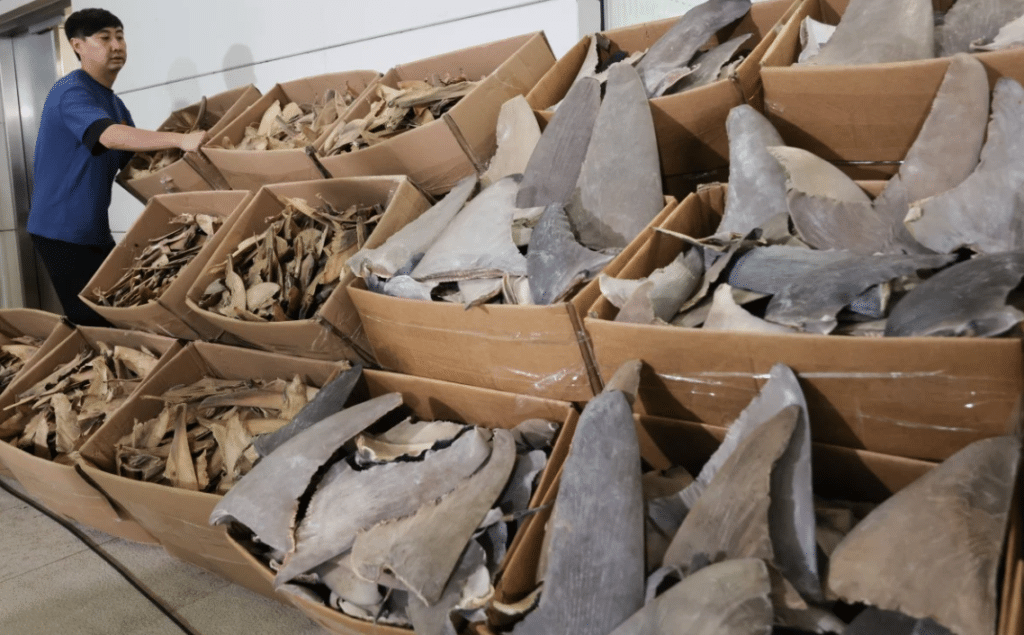
1. Hong Kong Customs Officers Have Seized HK$6.4 Million Worth of Dried Shark Fins
HONG KONG – Officers intercepted the vessel in the city’s northwestern waters at 12.10 am on Tuesday, the Customs and Excise Department said. The suspected scheduled shark fins were found mixed with declared goods such as electronic products, dried seafood and household items in one of the containers aboard the vessel. Samples of the seized shark fins were tested by staff from the Agriculture, Fisheries and Conservation Department, which confirmed they were from endangered species.
An investigation into the origin of the shark fins and the final destination of the haul was still underway. The importation, export or possession of endangered species without a license is punishable by up to 10 years in prison and a HK$10 million fine in Hong Kong. No arrests have been made so far.
Thank you for your generous gift that will help us continue the production of this weekly, free publication

2. CMFRI Proposes ‘Shark Hotspots’ to Protect Endangered Species
KOCHI, India — The ICAR-Central Marine Fisheries Research Institute (CMFRI) has proposed the demarcation of “shark hotspots” in Indian waters to implement spatio-temporal fishing regulations. This move aims to safeguard endangered species, juveniles, and breeding adults from targeted fishing. Presenting at a meeting on the conservation of sharks, Dr Shoba Joe Kizhakudan, who is head of the Finfish Fisheries division of ICAR-CMFRI, said that sharks have not evolved to withstand over-exploitation.
“They cannot reproduce fast enough to make up for the increasing number of deaths every year as most sharks have a long lifespan and low reproductive output. The presence of juveniles in landings further intensifies the threat to their sustainable population,” he said. There has been a declining trend in shark catches—which are very often by-catches—is the good news. However, much remains to be done as the populations are already overfished and declining too.

3. Wonder What the Fiscal Year 2024 NOAA Education Implementation Plan Looks Like?
Each fiscal year, NOAA Education programs identify priority strategies that support the 2021-2040 NOAA Education Strategic Plan. This effort is led by the NOAA Education Council, a forum of representatives from NOAA’s major education programs. Council members represent NOAA line offices, staff offices, and programs with education activities authorized by statute.
Throughout fiscal year 2024, Council members will participate in evaluation consultations to monitor any progress on and update their program strategies and planned activities. This process will be overseen by the NOAA Education Council Monitoring and Evaluation Committee. At the end of fiscal year 2024, we will summarize our implementation outcomes in an internal report to the Council. Click the link to read “the rest of the story”!
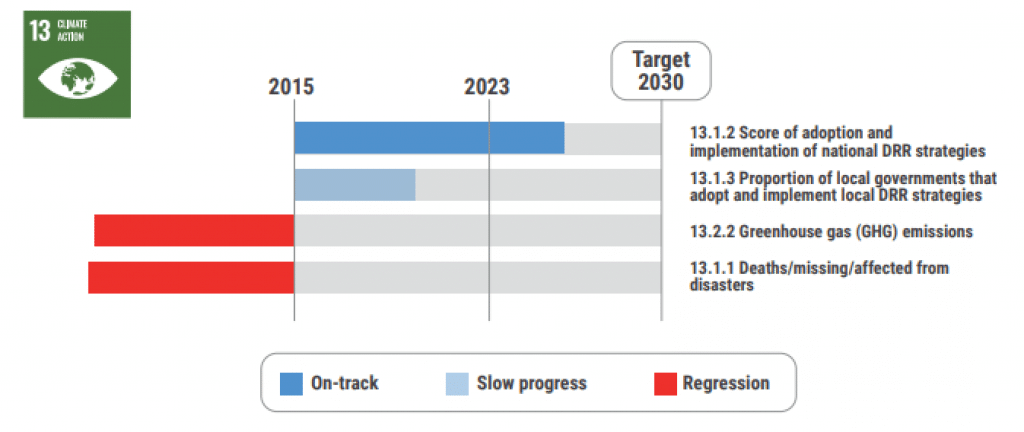
4. Asia-Pacific Region 32 Years Behind 2030 Target on Achieving SDGs
None of the 17 United Nations-mandated Sustainable Development Goals (SDG) are on track in the Asia-Pacific region. At the current pace, the region will not attain the 17 SDGs until 2062 or will be 32 years behind schedule, according to a new report by the United Nations Economic and Social Commission for Asia and the Pacific (UNESCAP). The report said that progress towards the goal of climate action (SDG 13) requires the greatest attention, but noted a lack of data is a key challenge across SDGs.
Close to 67 percent of the 169 targets are currently not measurable in the Asia-Pacific region and will affect monitoring progress. SDG 14 (Life Under Water) ranks in third place in the Asia-Pacific region when the average percentage of indicators lacking data is taken into account. SDG 13 ranks in fifth place.
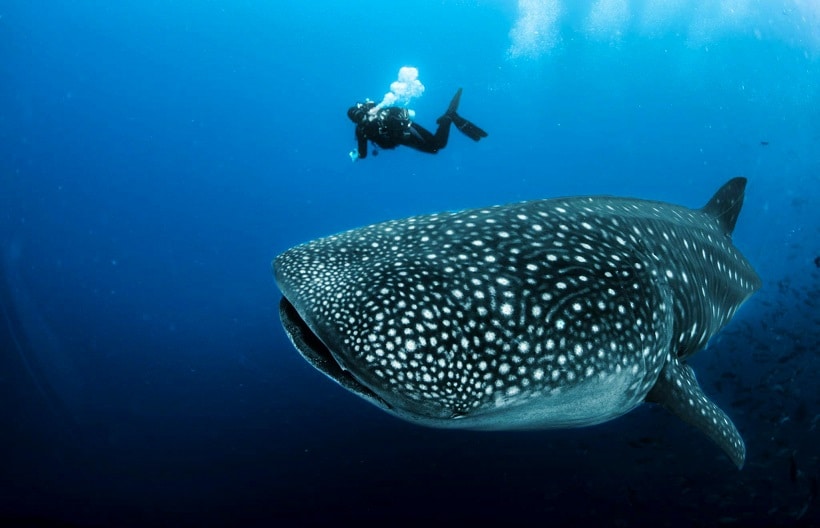
5. New Tool Launched to Help Countries Ensure That Wildlife Trade Is Sustainable
A new online interactive tool to help countries assess the sustainability of trading internationally listed wild plants and animals has been launched today by the UN Environment Programme World Conservation Monitoring Centre (UNEP-WCMC) and the International Union for Conservation of Nature (IUCN). The Convention on International Trade in Endangered Species of Wild Fauna and Flora (CITES) is the international agreement that sets wildlife trade protections.
To trade CITES-listed plants or animals, countries are required to scientifically assess whether international trade will be detrimental to the survival of a species in the wild. This decision is called a non-detriment finding (NDF). The NDF Support Tool launched today brings together, for the first time, over 30 species and trade datasets onto a single interactive platform. Users can search by CITES-listed species and country/territory combinations to quickly explore and compile the data they need for their assessments.
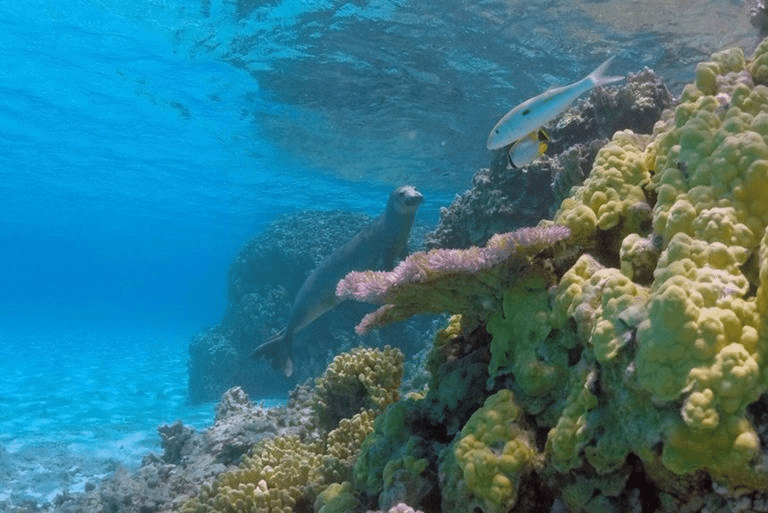
6. NOAA Proposes Massive Hawaii Marine Sanctuary Filled With Reefs, Atolls, Endangered Aquatic Life
The National Oceanographic and Atmospheric Administration (NOAA) has proposed a new national marine sanctuary near the Hawaiian Islands. “The proposed Papahānaumokuākea National Marine Sanctuary would supplement and complement existing authorities, including the area’s designation as a marine national monument”. The Papahānaumokuākea area is home to multiple endangered species, including the Hawaiian monk seal and green sea turtles.
“NOAA has worked for decades with partners to incorporate native Hawaiian heritage, knowledge, and values into co-management of Papahānaumokuākea Marine National Monument,” said NOAA National Ocean Service Assistant Administrator Nicole LeBoeuf. As with many projects, the NOAA has asked the public to comment on the draft proposal, and the public can weigh in on this project up until May 7. The proposed sanctuary would span approximately 582,250 square miles and incorporate several reefs and atolls to the west of Hawaii.
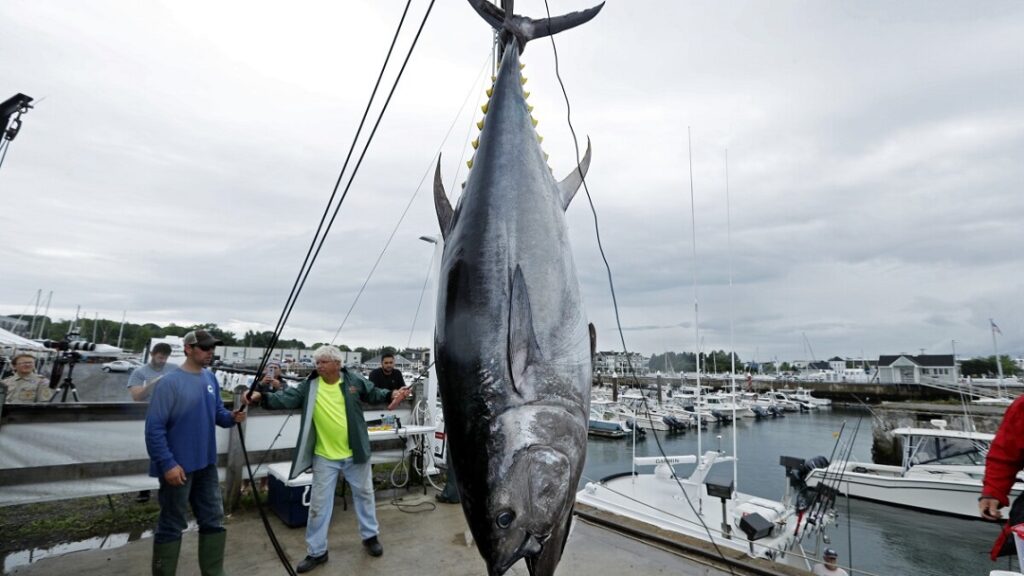
7. Environmentalists Disappointed by Bluefin Tuna Vote
MALTA — Nature Trust (Malta) and the World Wildlife Fund (WWF) have expressed their concern over the rejection, by the EU, of a proposal to ban the international trading of Bluefin tuna. Malta was among the countries that had lobbied against approval of the proposal. Nature Trust said that short-term economic gains were put before long-term sustainable fishing and the welfare of this species.
WWF said that despite the good progress represented by 21 out of 27 European Union Member States that had confirmed their support for the international trade ban, this majority was not enough for the ban to be ordered. “WWF is calling on other CITES Contracting Parties to stand up for what the European Commission has accepted as necessary – that global trade in endangered Atlantic bluefin must be urgently halted until it is clearly on the road to recovery,”.
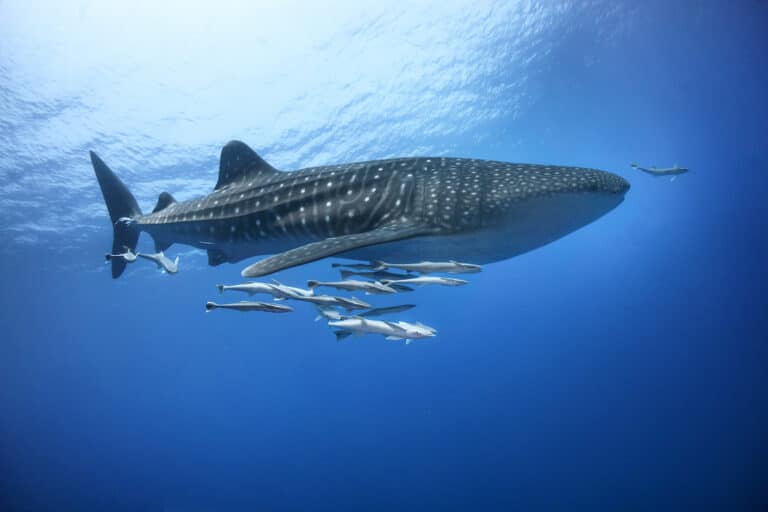
8. Summit on Migratory Species Sides With Science, Throws Shade on Deep-Sea Mining
SAMARKAND, Uzbekistan — Migratory species that travel long distances in the ocean, including sharks, turtles, and dolphins, face an unprecedented number of threats resulting from human actions. During the latest assembly of the Convention on the Conservation of Migratory Species, parties added several new species to the convention’s appendices and made decisions to address the present and future threats to these species, such as the impacts of climate change and the prospect of deep-sea mining.
On the subject of deep-sea mining, attendees adopted a resolution that urges the convention parties not to support the controversial activity, at least not until robust scientific information has been obtained to make more informed decisions. The practice of deep-sea mining has yet to be undertaken anywhere in the world, but its possible effects on the marine environment, and its unique fauna, are yet subject to debate and speculation.
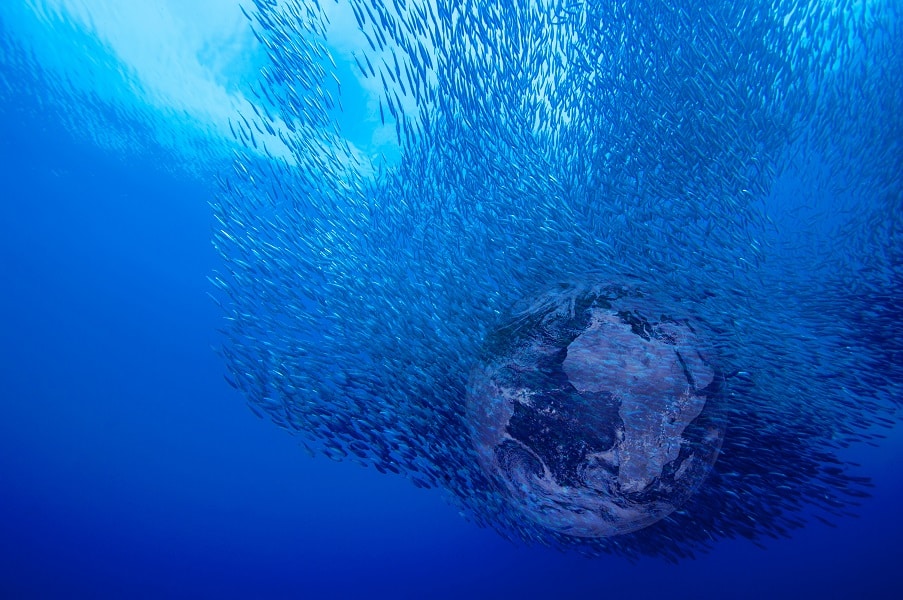
9. United States and Oman Convene the Inaugural Meeting of the Subcommittee on Environmental Affairs
The United States and Oman held the inaugural meeting of the Subcommittee on Environmental Affairs, under the United States–Oman Free Trade Agreement, as well as the fourth meeting of the Joint Forum on Environmental Cooperation. The Subcommittee reviewed the progress made by Oman and the United States in ensuring effective implementation of, and compliance with, the obligations in the Environment Chapter of the FTA.
The Joint Forum discussed future environmental cooperation under the 2024-2027 Plan of Action, which establishes a robust list of priorities for cooperative activities between the two countries. The United States and Oman exchanged information and views regarding efforts to strengthen marine species conservation, including through combating illegal, unreported, and unregulated fishing and implementing the WTO Fisheries Subsidies Agreement. Events like this reflect the two countries’ commitment to maintaining an open dialogue and participatory process.

10. Ancient Origins of the Vampire Squid
Delving into the evolution of the deep-sea vampire squid, Vampyroteuthis infernalis is a mysterious pursuit. Recent discoveries, including a specimen unearthed from the Early Jurassic of Luxembourg, are shedding new light on the early anatomy of vampyromorphs. Enter Simoniteuthis michaelyi, a newfound taxon that has captured the attention of researchers worldwide. This remarkable creature, based on a nearly complete pen accompanied by a head-arm complex, is a brilliantly preserved fossil. Simoniteuthis has only four arm pairs instead of the expected five.
This anomaly challenges our understanding of vampyromorph anatomy. Also surprising is the finding that the specimen’s mouth region reveals evidence of predation on two bony fishes. The two animals died in the act of predation—likely sinking into hypoxic waters and suffocating. Simoniteuthis inhabited shallower waters, and this divergence in habitat and hunting behavior offers insights into the evolutionary trajectory of these captivating creatures.
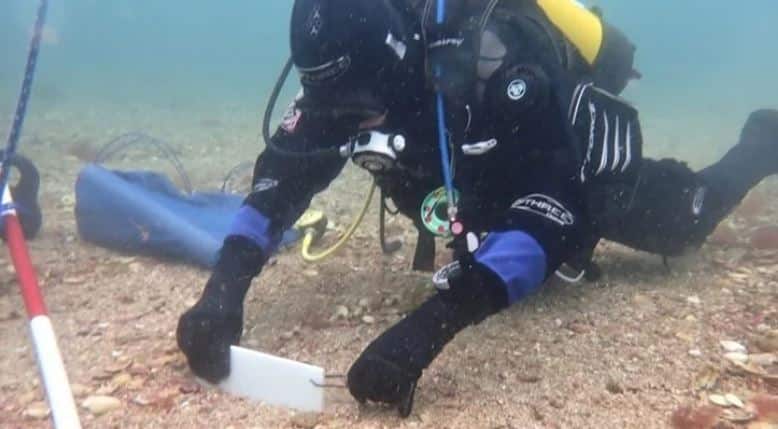
11. Rare Seaweed the Size of Nearly 900 Rugby Pitches Found off Falmouth
CORNWALL, England — A 4,000-year-old maerl bed has been discovered off the coast near Falmouth and Penzance. This rare and ancient type of seaweed provides protection for many small marine plants and animals, but also it is extremely efficient at storing carbon at an estimated rate of 841 tonnes of CO2 annually – the equivalent to nearly four million petrol car miles a year.
Cornwall Council is currently working with the University of Exeter and other organisations to protect the valuable ecosystem from threats such as anchor damage, swing moorings, nutrient discharge, and sea surface temperature increases from climate change. This is the first time the full extent of the maerl beds and the organic matter stored in the conservation area has been measured, with the discovery now marking the location as a key national site for this irreplaceable blue carbon habitat.
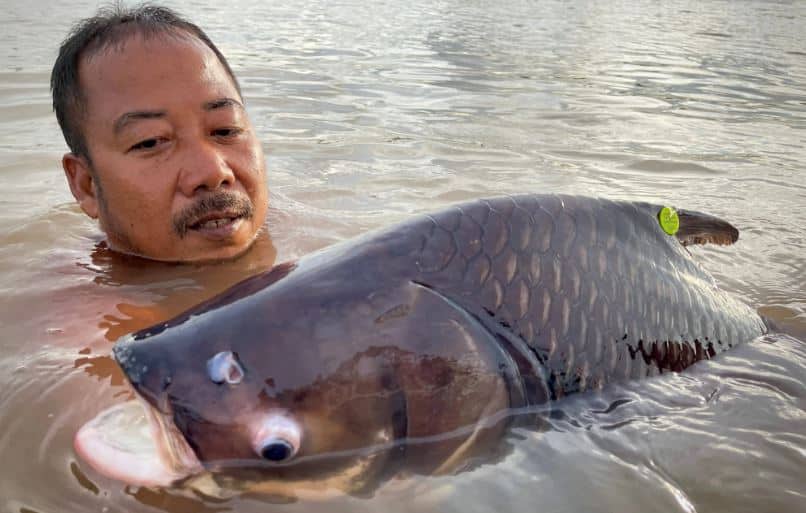
12. As Chinese-Built Dams Multiply, 1 in 5 Mekong Fish Species Face Extinction, Report Finds: ‘Biggest Threat Is Hydropower’
MEKONG RIVER, China — Some 19 percent of the 1,148 or more fish species in Southeast Asia’s longest river are heading toward extinction, according to a new report. Unsustainable development threatens the health and diverse fish populations of the Mekong River, with one-fifth of fish species in Southeast Asia’s main artery facing extinction. The Mekong stretches nearly 5,000km (3,000 miles) and is a farming and fishing lifeline for millions of people in China, Laos, Myanmar, Thailand, Cambodia and Vietnam.
Threats to its fish include habitat loss, conversion of wetlands for agriculture and aquaculture, unsustainable sand mining, introduction of invasive species, worsening climate change, and hydropower dams fragmenting the flow of the river. The biggest threat right now is hydropower development. Proliferating Chinese-built hydroelectric dams upriver have blocked much of the sediment that provides essential nutrients to tens of thousands of farms in the Mekong.
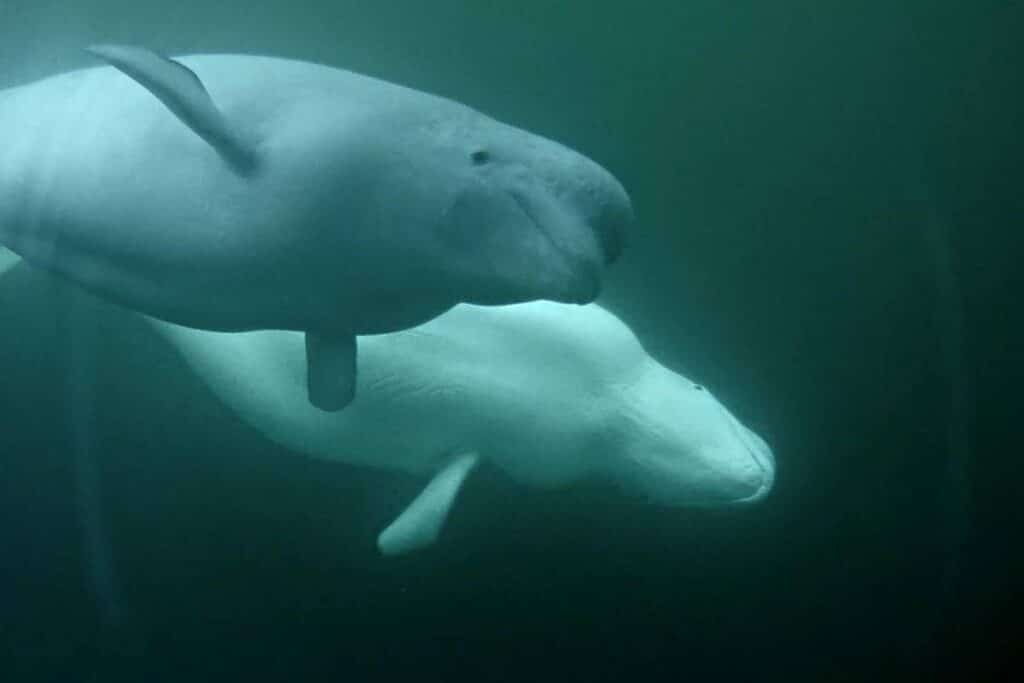
13. New Marine Conservation Area Will Protect Beluga Wales, Polar Bears
ONTARIO, Canada — A proposed marine conservation area along the Hudson and James Bay coasts would protect 86,000 square kilometers of federal waters from industrial development. The project is led by the indigenous Mushkegowik Council partnered with Parks Canada. There are five stages in the process and is currently at step three, the feasibility assessment. Data about every possible scenario of the proposal is collected and examined.
The Mushkegowuk National Marine Conservation Area would protect polar bears, beluga whales, many types of fish, and indigenous hunting rights. The aim is to put the Mushkegowuk into the position of primary stewards of the land and ultimately protect their way of life. After feasibility conditions are agreed upon, phase four will begin, which includes negotiations between the government and community about job increases, better housing, bigger boats, and energy self-sufficiency.
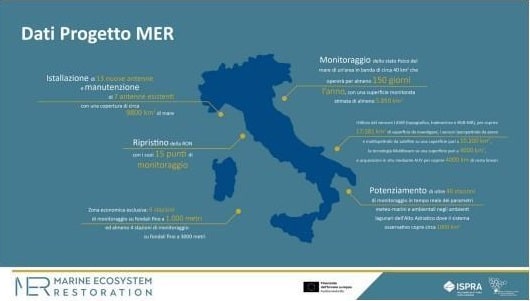
14. Italy to Map All Coastal Habitats in Marine Ecosystem Restoration Push
Italy – In an unprecedented process, Italy has started to map its entire coastal area – 7,500 KM – using remote and acoustic technologies. The project has been initiated to better understand the need for conservation and restoration efforts by the government’s Institute for Environmental Protection and Research as a part of the wider Marine Ecosystem Restoration (MER) project. “In less than two years, this project aims at mapping for the first time the integral coast habitat of Italy,” said Giordano Giorgi, project director at ISPRA and MER.
ISPRA will use different mapping methodologies, including electromagnetic waves, acoustics, and light to scan underwater habitats. These technologies have been recognized by the UN Environmental Programme as critical in helping countries identify where urgent action is needed to protect, manage, and restore ecosystems under the Kunming-Montreal Global Biodiversity Framework (GBF) targets.

15. Microplastic Pollution: Preventing the Loss of Plastic Pellets
All types of plastic objects are made with smaller components, known in the industry as “mermaids’ tears”. The pellet, powder or flake can be split at every point along the supply chain, and if not managed properly they could be lost to the wider environment. And it happens. Just talking about the EU in 2019, estimates show that between 52,140 and 184,290 tonnes of pellets were lost to the natural world, and there are approximately 50 million in a tonne!
The problem of pellet loss to the terrestrial and aquatic ecosystem is not new. Still, chronic and acute loss of these mermaid tears continues to be widespread, mainly because of a lack of implementation of industry best practices already in existence. The best way forward would seem to legally require companies to ensure their entire plastic supply chain has robust measures to prevent pellet loss.

16. Norway Cooperates With ASEAN in Reducing Marine Plastic Pollution
Jakarta –The Government of Norway launched the ASEAN-Norway Cooperation Project on Local Capacity Building for Reducing Plastic Pollution in the ASEAN Region (ASEANO) Phase 2 in Siem Reap, Cambodia, on March 4, 2024. During the 2019-2022 period, the ASEANO project successfully focused on developing local river plastic monitoring capacity, building knowledge on household and industry sources of plastic pollution, and increasing the effectiveness of plastic waste management policies. The first phase of the ASEANO project focused on selected pilot catchments in Indonesia and the Philippines.
ASEANO2 will be implemented from 2023 to 2027 by the Norwegian Institute for Water Research (NIVA) and the Center for Southeast Asian Studies (CSEAS) Indonesia. ASEANO2 aims to develop targeted and cost-efficient prevention and mitigation measures for plastic pollution in ASEAN through a multidisciplinary, cross-sectorial, and holistic approach. This project will set up case study sites in Cambodia and Vietnam.
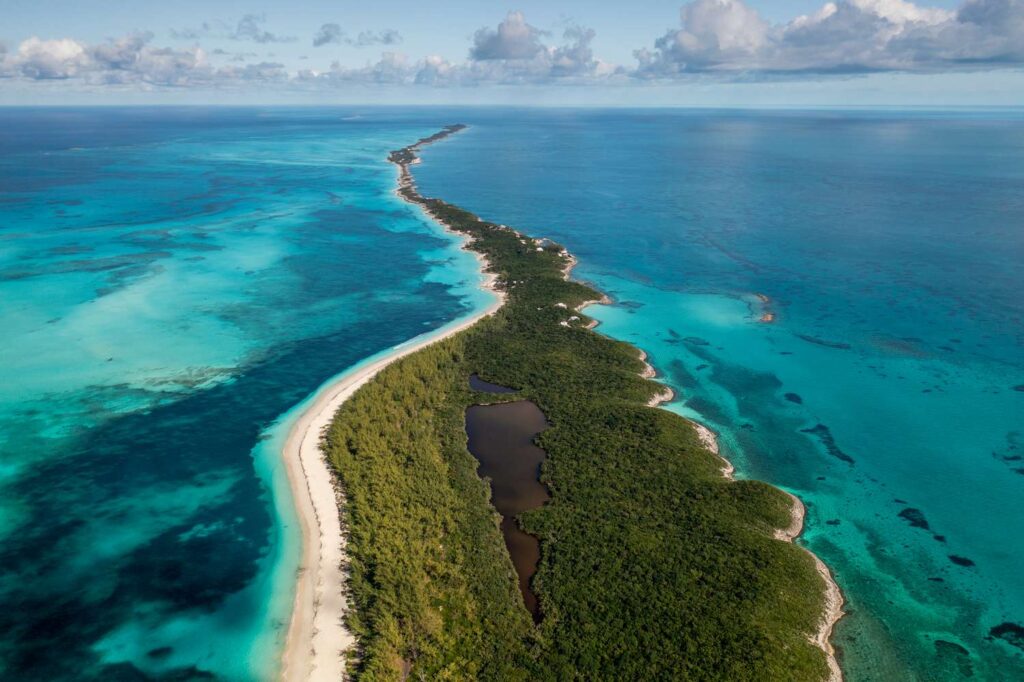
17. UK to Fund Caribbean Ocean Management
ENGLAND – The United Kingdom has announced £190,000 (486,950 USD) in funding to assist Caribbean countries in sustainably managing their ocean resources. The announcement was made by David Rutley, Minister for the Americas, Caribbean and UK Overseas Territories, during the CARICOM summit last week in Georgetown. The funding is to be used to create a unified action plan for Caribbean nations to benefit economically from ocean resources in an environmentally sustainable manner, according to a British government release.
The UK is leading marine conservation efforts in the Caribbean through its Blue Belt programme for three UK Overseas Territories – the Cayman Islands, Turks and Caicos Islands, and Anguilla. Established in 2016, Blue Belt is the largest marine conservation network, covering ten British territories stretching from the Southern Ocean to the Pacific and making up one per cent of the world’s oceans.
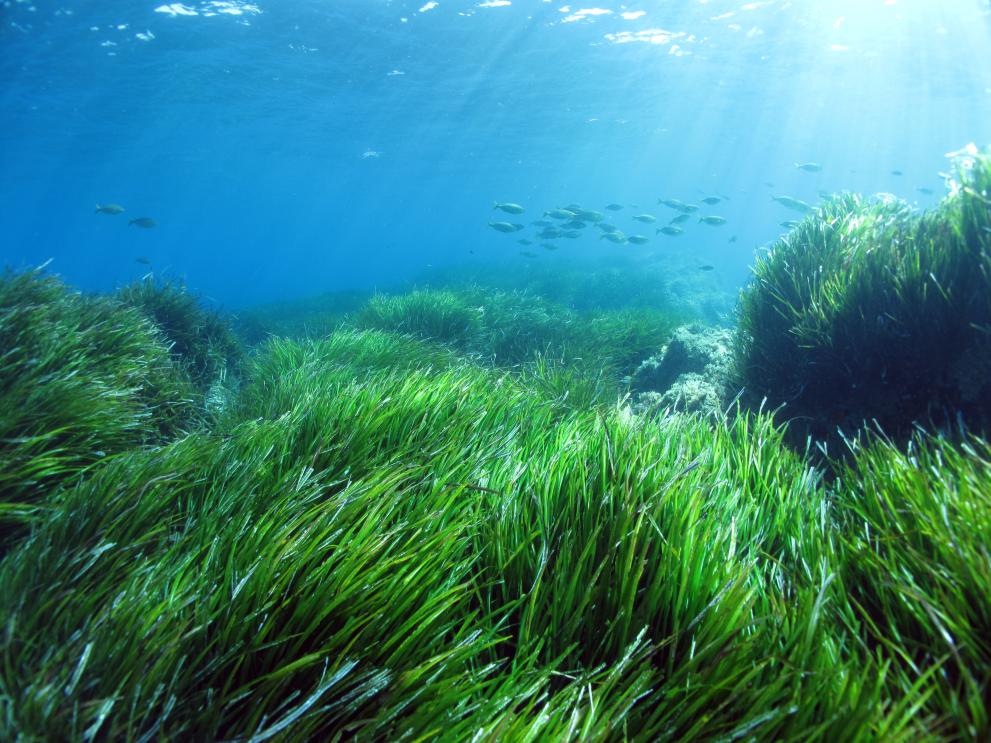
18. LIFE Programme Protecting Life by the Sea
FRANCE –The marine waters around France are a mosaic of habitats. A LIFE project is helping the French marine Natura 2000 network protect them and reach favourable conservation status. France’s European coastline is home to an abundance of marine biodiversity. It includes 9 marine habitat types, including priority habitats for conservation, Posidonia beds and coastal lagoons.
These are classified as marine protected areas, and in the EU the number of marine protected areas has increased by over 6% in 9 years, due to the expansion of the Natura 2000 network and Habitats Directive. The French marine Natura 2000 network, still in its early stages, is far from reaching its conservation status objectives. Reasons include knowledge gaps about marine life and environment, and the impact of human activities. LIFE Integrated Project Marine Habitats, also known as LIFE MarHa, is on hand to help.

19. Fears of Marine Disaster Loom After Fertilizer-Laden Ship Sinks in Red Sea
RED SEA – A cargo ship carrying about 21,000 metric tons of ammonium phosphate sulfate fertilizer, has sunk in the Red Sea following an attack by Yemen’s Houthi rebels, raising fears of an environmental disaster. Tons of ammonium phosphate sulfate fertilizer, which experts say could cause detrimental effects to the marine environment. Shortly after the attack, the vessel also began leaking heavy fuel, leaving a 30-kilometer (18-mile) long oil slick in the water.
The authority said in a statement that the fertilizer on board the vessel was “very dangerous.” This disruption could have far-reaching consequences, affecting various species that depend on these ecosystems and, potentially impacting the very livelihoods of coastal communities. The fertilizer’s release could stimulate the growth of algae, using up oxygen that other marine life depends upon. The Red Sea is known to harbor some of the world’s most heat-resistant coral reefs.
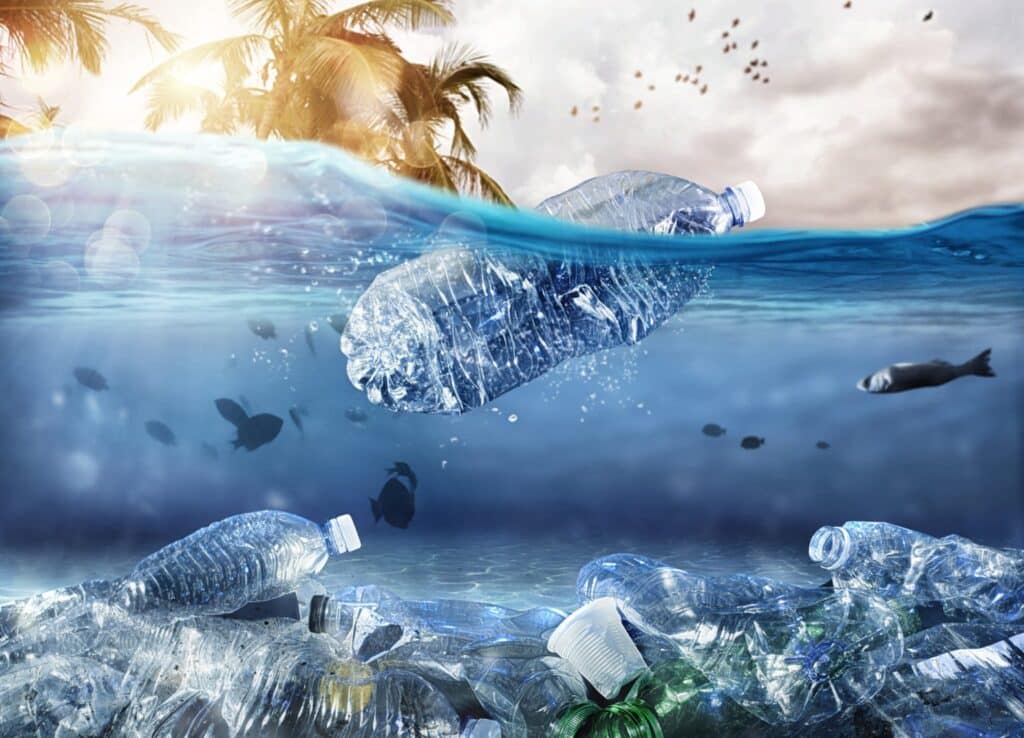
20. Health Risks Unwrapped: Recycled Plastic May Harm You, Finds Study
NEW DELHI, India — A study by Toxics Link, released on Tuesday has revealed that plastic recycling in India, including Delhi, is unsafe with products made from recycled plastic containing a toxic cocktail of chemicals. These chemicals pose health risks to humans, especially in low-income communities. Comprehensive standards and regulations are needed for safer plastic recycling.
At different markets in Delhi, toy samples and food contact material were collected and analyzed by researchers of Toxics Link, who found a cocktail of chemicals in them. Around 67% of tested products contained one or more of the five chemicals investigated, which are substances that pose various health risks, including impacts on the reproductive system and pregnancy, respiratory issues, dermal effects and DNA damage. The report highlighted the absence of comprehensive standards and regulations governing the production of recycled plastic products.
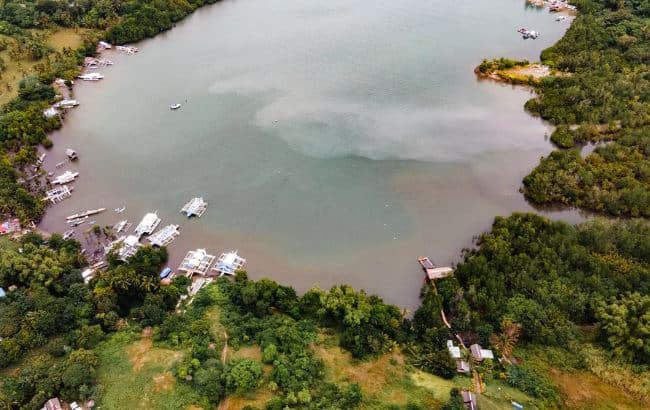
21. Groups in the Philippines Aim to Preserve Their Fishing Waters Before It’s Too Late
PHILIPPINES – In the 1970s, the Philippine government established marine protected areas (MPA’s), to counter the extreme overfishing and pollution in the surrounding oceans. This area is the crown jewel of the Indo-Pacific Coral Triangle, with a reef system spanning more than 22,000 sq km. While the MPAs are a move in the right direction, the government isn’t managing most of them. Enter the Bantay Dagat, a team of village-appointed volunteers who guard their waters.
They fend off any local people trying to illegally fish in the community marine sanctuaries, any commercial fishers trying to trespass into municipal waters within 15km (nine miles) of the coastline, and the Mangrove forests. Despite their efforts, the volunteer Bantay Dagat is losing the battle. Experts say if the government doesn’t intervene, the local main food source – the oceans surrounding these islands — will continue to be critically depleted.

22. Monitoring Humpback Whales Using Image Recognition
Humpback whales have a range that covers all of the world’s oceans, making individuals sometimes difficult to track over the course of their lifetimes. Automated image recognition software potentially enables the identification of objects from almost any type of picture, including normal optical camera pictures. Using data science and AI techniques to identify and track marine mammals has great potential for enabling non-invasive techniques to track many vulnerable species.
By empowering scientists and non-scientists to contribute, the public can feel more attached and involved in conservation efforts, which can aid in advocating for efforts to minimize harm such as calls for greater care in fishing that harms humpback populations. Scientists and others can also build on such efforts and expand to marine and other creatures potential using such technology so that there is better tracking of vulnerable animals and aid in their conservation.
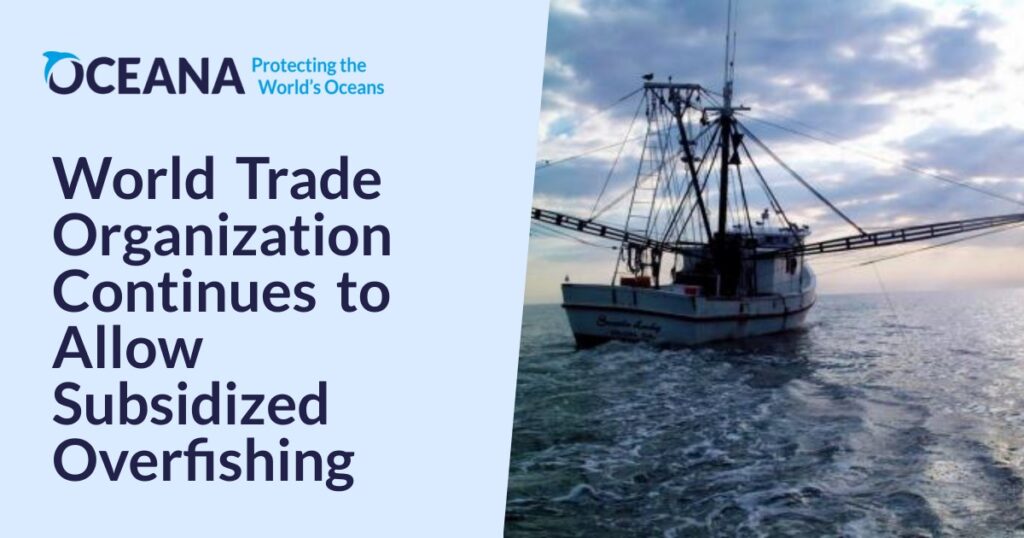
23. World Trade Organization Continues to Allow Subsidized Overfishing
This week, at the World Trade Organization’s (WTO) ministerial conference, ministers were unable to finalize an addendum to its Agreement on Fisheries Subsidies that had the potential to curb harmful fisheries subsidies that lead to overfishing. This setback extends the WTO’s two-decade-long streak of failing to prohibit harmful subsidies. According to research, harmful fisheries subsidies from the world’s top fishing nations disproportionately impact the vulnerable developing nations that depend on fish for food security and livelihoods.
The draft agreement included measures that could help rectify this imbalance. Without them, these practices will continue. Oceana is calling for members to shift their focus to ratifying and then strengthening the first agreement, which at least prohibits subsidies for illegal fishing and fishing on depleted fish stocks. To date, 70 members have accepted the Fisheries Subsidies Agreement, meaning 40 acceptances remain for the agreement to enter into force.

24. Flashing Lights on Fishing Nets ‘Reduce Accidental Catching of Turtles’
Lighting up fishing nets with green flashing lights could reduce the number of sea turtles that are accidentally caught and killed, a study has found. An estimated 40,000 turtles die each year in the Mediterranean when they are trapped as “bycatch” in nets targeting fish species. This includes around 13,800 killed in small-scale fishing operations – which use nets set close to the coast where they trap turtles foraging or near nesting sites – and scientists warned this figure is likely to be an underestimate.
A trial to attach cheap flashing LED “NetLights” on set nets used by small-scale fishers in the Mediterranean suggests it reduced the number of green and loggerhead turtles caught by 42%. The project by the University of Exeter, the Society for the Protection of Turtles (SPOT) and Cypriot fishermen also halved the bycatch of skate and rays.
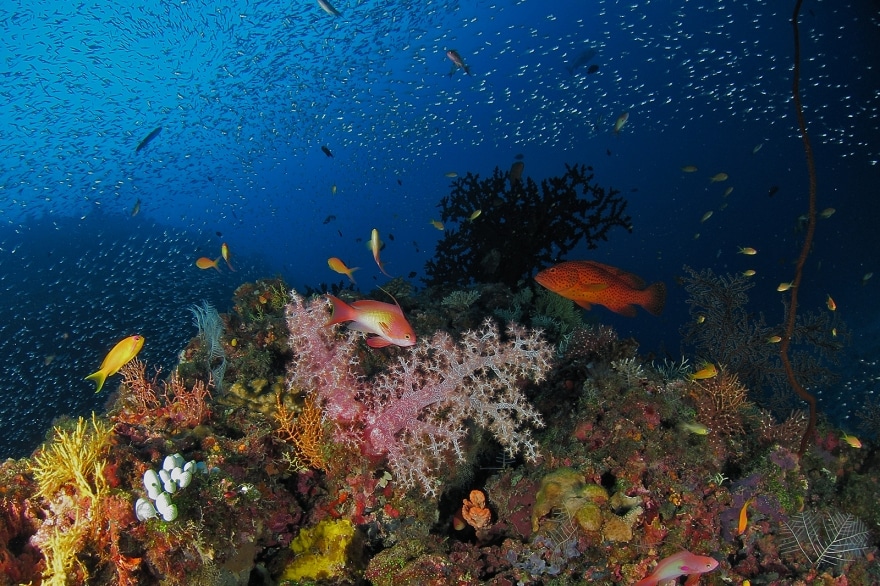
25. Global Coral Restoration Initiative: Delta Foundation Joins Forces With Mote to Combat Climate Change
Intending to restore an impressive ten thousand corals over three years, the Delta Environmental and Educational Foundation has partnered with Mote Marine Laboratory & Aquarium. The Delta Foundation focuses on conserving endangered coral species and is working on an initiative that extends beyond coral restoration to include the establishment of the first zero-carbon coral conservation center. The center will focus on establishing an underwater heat-resilient coral nursery, crucial for preparing for the next marine heatwave event.
The Mote Marine Laboratory & Aquarium Coral Reef Restoration & Research Program has successfully restored over 220,000 corals in the last nearly 70 years. The collaboration between the two organizations signifies a pivotal step towards globalizing efforts to enhance coral resilience against rising ocean temperatures. The exchange of knowledge and resources will foster a sustainable approach to marine conservation, leveraging technology and volunteerism to protect our coral ecosystems.
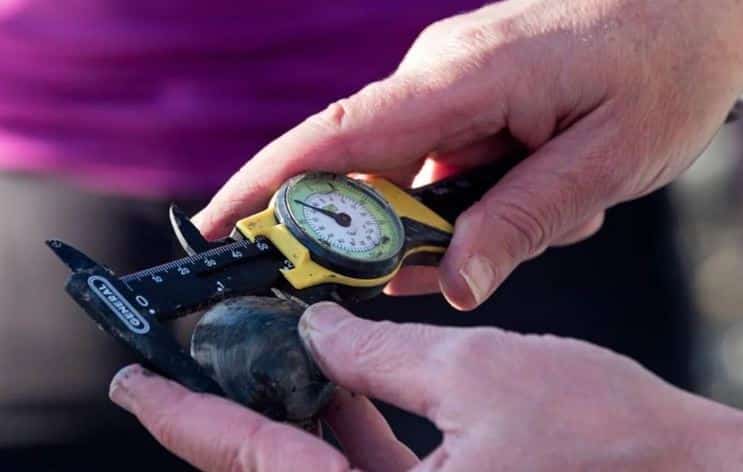
26. Marine Resources Committee Votes to Amend Shellfish Ordinance
BAR HARBOR, Maine — On February 28th, the Marine Resources Committee (MRC) voted to recommend quahogs, razor clams, easter oysters, and hen clams be added to the town’s shellfish conservation ordinance. Harvesting would be limited to approximately one five-gallon bucket of hen clams and half of a five-gallon bucket of quahogs, razor and soft-shell clams, and eastern oysters. The commercial harvest of quahogs will be around two five-gallon buckets full.
Finally, the area between Northwest Cove and the northwestern end of Clark Cove will now be a conservation habitat. Joanna Fogg, committee member and owner of Bar Harbor Oyster Company, says that making commercial licenses available to non-residents is positive. She mentioned, “I would like to see people who live in the area be able to make a living from these resources”.




